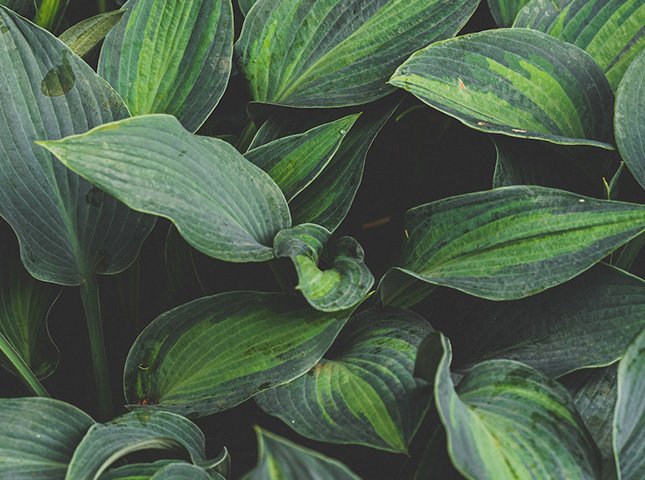Hostas are beloved by garden enthusiasts for their stunning foliage and versatility in landscaping. These hardy perennial plants come in a variety of sizes and colors, making them a popular choice for gardens across the country.
However, many gardeners have wondered do deer eat hostas plants? In this article, we’ll explore this question and provide strategies for protecting your hostas from hungry deer.
Table of Contents
Key Takeaways
- Deer are known to eat hostas plants, which are popular for their lush foliage and vibrant colors.
- Certain factors like the availability of other food sources and the deer population in your area can influence whether deer will target your hostas.
- Protecting your hostas through various methods can help deter deer and keep your plants thriving.
Understanding Deer and Hostas
Deer’s Dietary Habits
Deer are herbivores, which means deer primarily eat plants. Their diet can vary based on the availability of food in their habitat, the season, and the deer population in a specific area. While deer are known to graze on a wide range of plants, they have their preferences.
Why Deer Are Attracted to Hostas
Deer are drawn to hostas for several reasons:
- Lush Foliage: Hostas have lush, tender foliage that can be tempting for deer, especially in early spring when other food sources may be scarce.
- Moisture Content: Hostas typically have a high moisture content, making them a valuable source of hydration for deer, particularly during hot, dry periods.
- Low Maintenance: Hostas are low-maintenance plants, often found in gardens and landscapes near wooded areas where deer roam.
Do Deer Eat Hostas?
The answer is yes, deer do eat hostas plants. While deer may not favor hostas as much as some other plants, they will consume them if other food sources are limited. Several factors can influence whether deer will target your hostas:
1. Local Deer Population
Areas with a high deer population are more likely to experience hosta damage. If deer are abundant in your region, they may be more inclined to browse on your plants.
2. Seasonal Variation
Deer are more likely to munch on hostas during certain times of the year. Spring and early summer, when hostas are lush and tender, pose the greatest risk.
3. Availability of Other Food
Deer prefer natural forage, but if their preferred food sources are scarce, they may turn to your hostas as an alternative.
Protecting Your Hostas from Deer
Now that you know deer can eat hostas, it’s essential to take steps to protect your plants if you want to enjoy their beauty in your garden. Here are some effective strategies:
1. Deer-Resistant Plants
Consider planting deer-resistant species alongside your hostas. Examples include daffodils, foxglove, and lavender. These plants are less likely to attract deer.
2. Fencing
Installing a sturdy deer fence is one of the most effective ways to keep deer away from your hostas. Choose a fence that’s at least 7-8 feet tall to deter them from jumping over.
3. Repellents
Various deer repellents are available, including sprays and granules. These products emit odors that deter deer from approaching your hostas.
4. Motion-Activated Devices
Motion-activated devices like sprinklers or lights can startle deer and deter them from entering your garden.
Protecting Your Hostas and More
Choosing Deer-Resistant Hosta Varieties
While no hosta can be completely deer-proof, some varieties are less appealing to deer due to their textures or fragrances. Consider planting these varieties:
- Hosta ‘Blue Mouse Ears’: This small hosta has thick, blue-green leaves that are less tempting to deer.
- Hosta ‘Halcyon’: Its thick, blue leaves and sturdy texture make it less attractive to browsing deer.
- Hosta ‘Empress Wu’: This giant hosta has large, coarse leaves that deer typically avoid.
Additional Protective Measures
In addition to the strategies mentioned earlier, here are more ways to protect your hostas:
- Deer Netting: Install deer netting around your hostas to create a physical barrier.
- Milorganite: Some gardeners swear by using Milorganite, a deer-repellent fertilizer, to deter deer from their gardens.
- Regular Monitoring: Keep a close eye on your hostas for signs of deer damage, and take action promptly if needed.
Frequently Asked Questions (FAQs)
1. Will deer always eat my hostas?
Deer tend to eat hostas when other food sources are scarce or during specific seasons. By implementing protective measures, you can reduce the likelihood of deer damage.
2. Are there natural ways to deter deer from hostas?
Yes, some gardeners use natural remedies like homemade garlic or hot pepper sprays to deter deer. However, their effectiveness can vary.
3. What else can I plant alongside hostas to deter deer?
In addition to deer-resistant plants, you can consider planting herbs like rosemary or lavender, which have strong scents that may deter deer.
4. Do scare tactics like scarecrows work against deer?
Scarecrows and other visual deterrents may startle deer temporarily, but they are not always reliable for long-term protection.
5. Can I use human hair or soap to keep deer away from my hostas?
Some gardeners have reported success using human hair or soap as deer repellents. However, their effectiveness can be inconsistent.
6. Are there deer-resistant hostas?
While no hosta is entirely deer-resistant, certain varieties are less appealing to deer due to their characteristics, such as texture and fragrance.
In conclusion, while deer may have a taste for hostas, there are effective ways to protect your plants and enjoy their beauty in your garden. By selecting the right hosta varieties, employing protective measures, and being vigilant, you can deter deer and keep your hostas flourishing.


